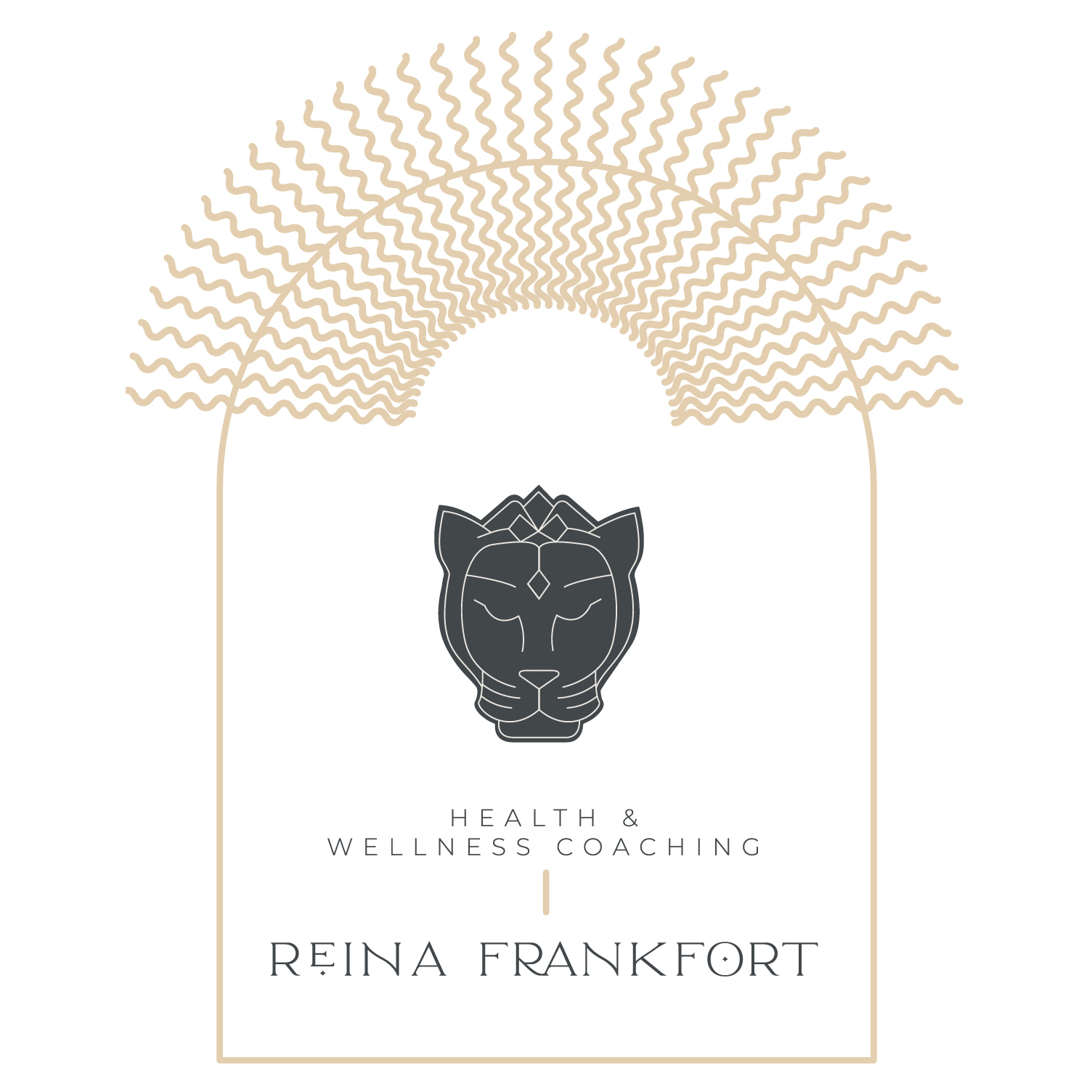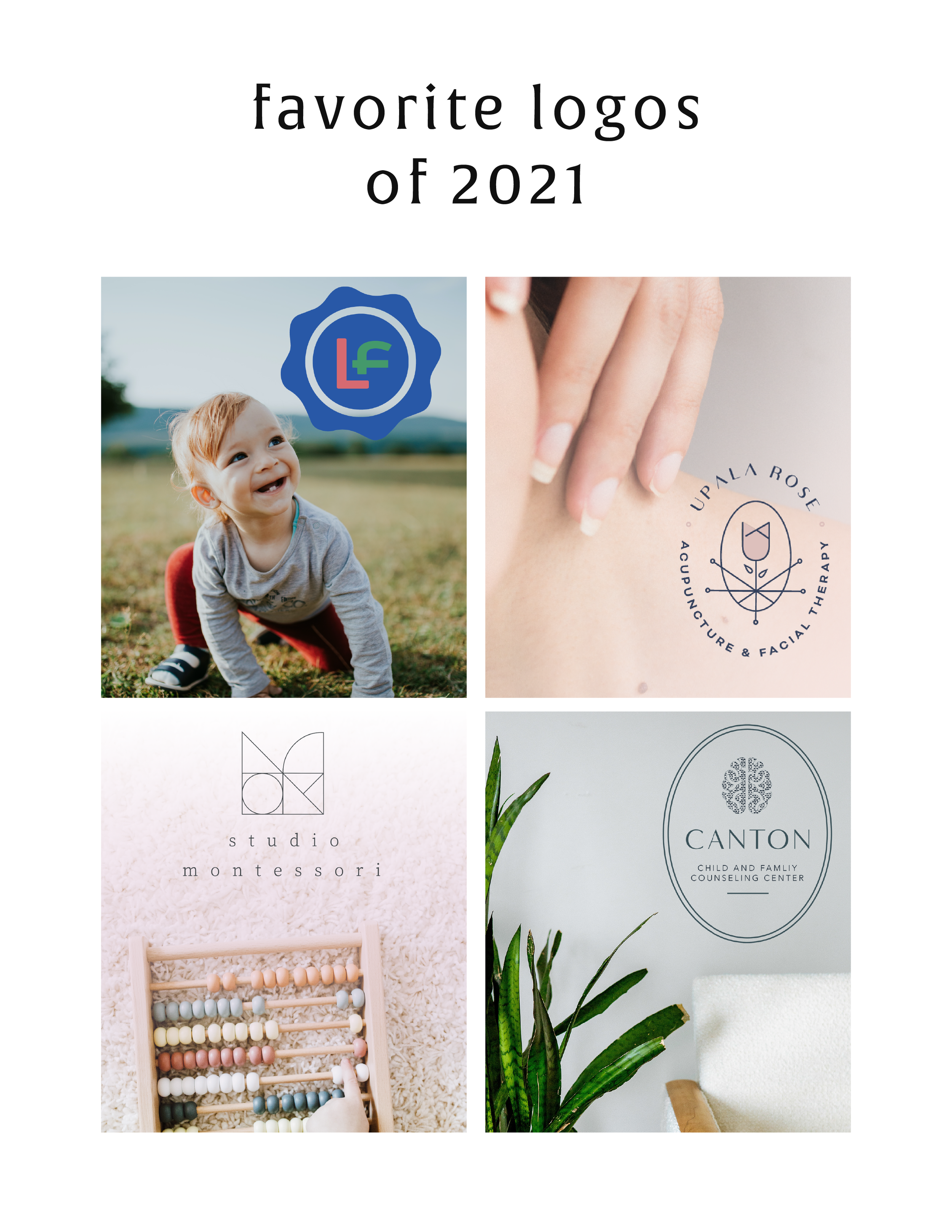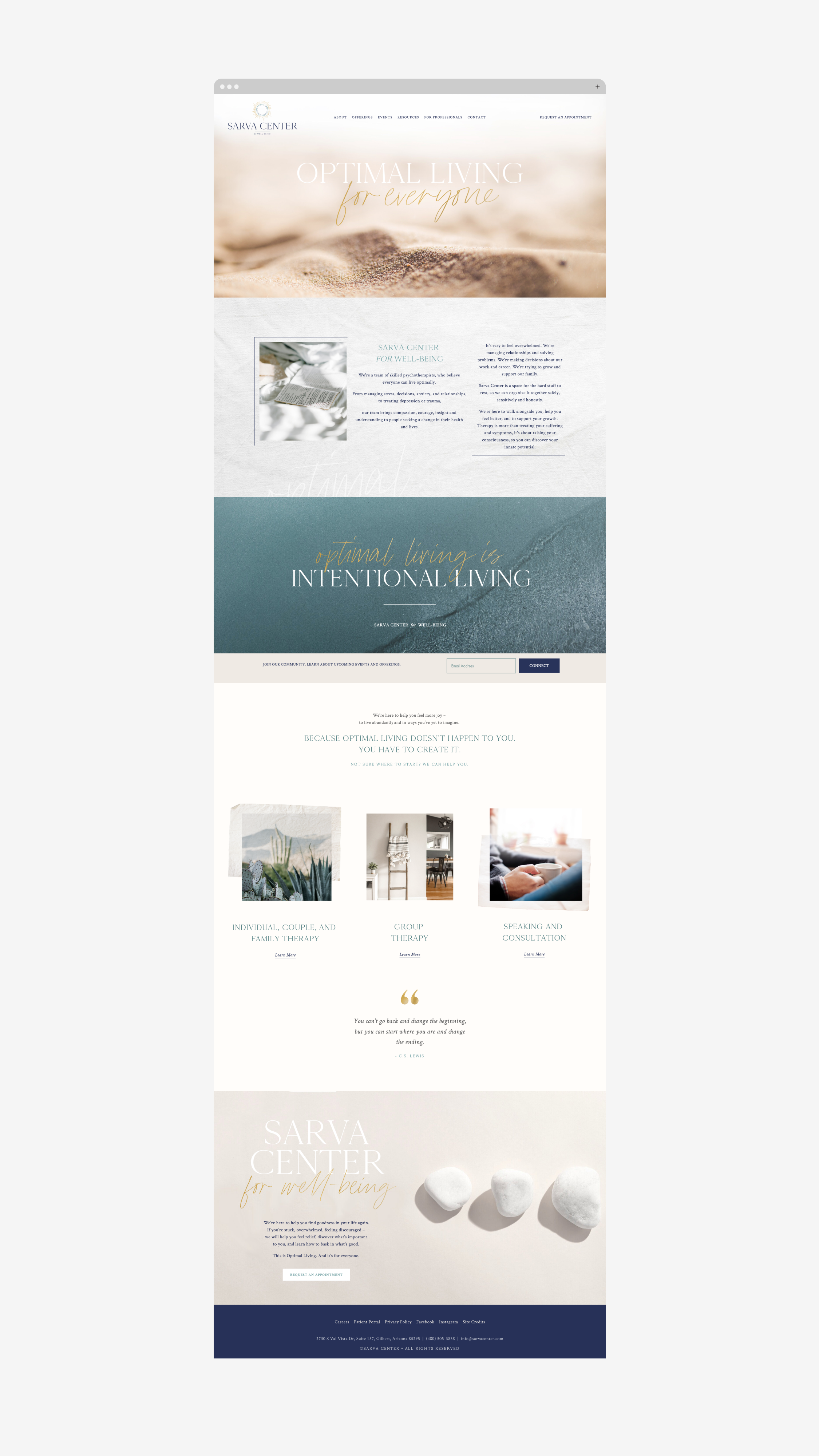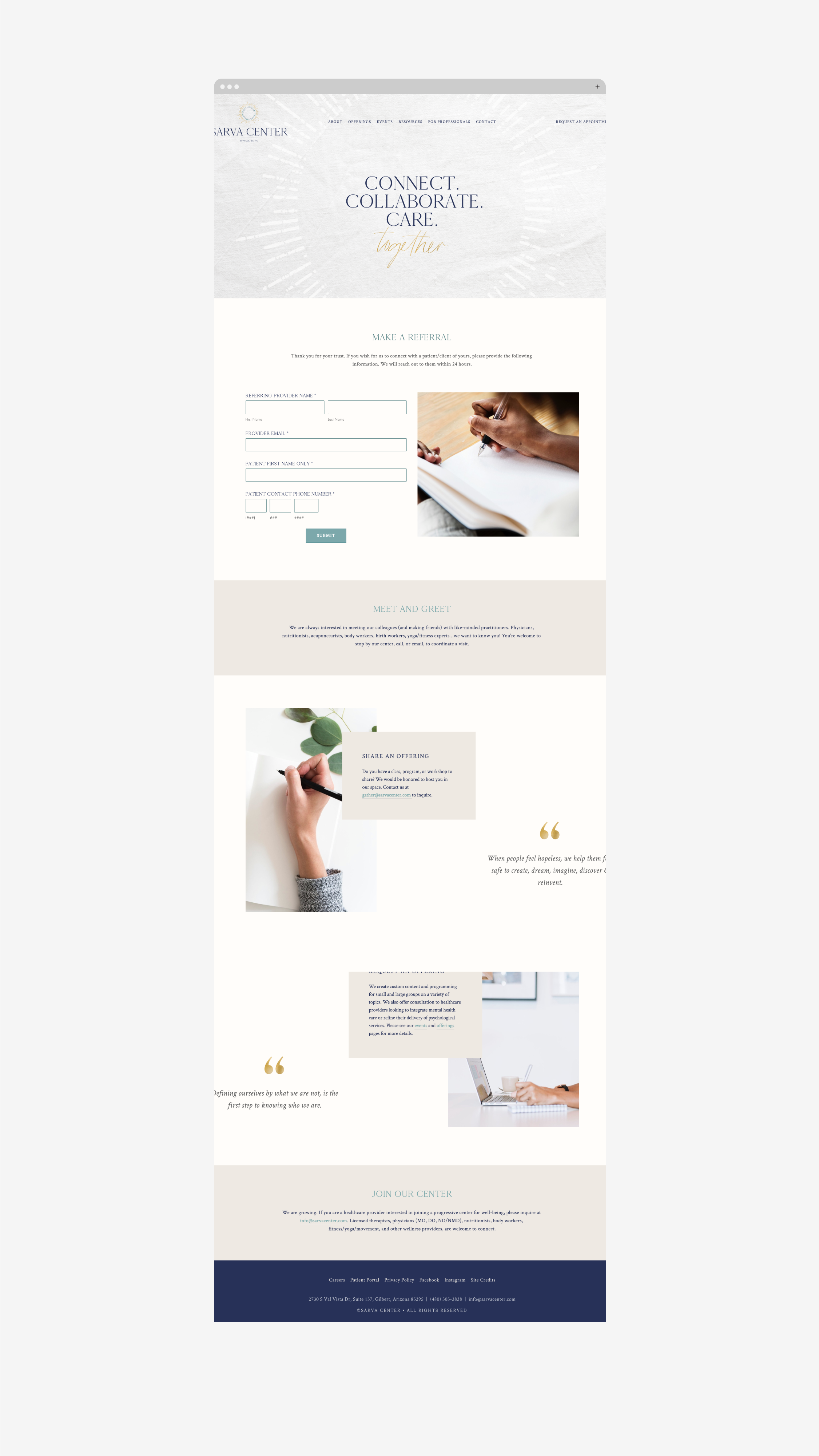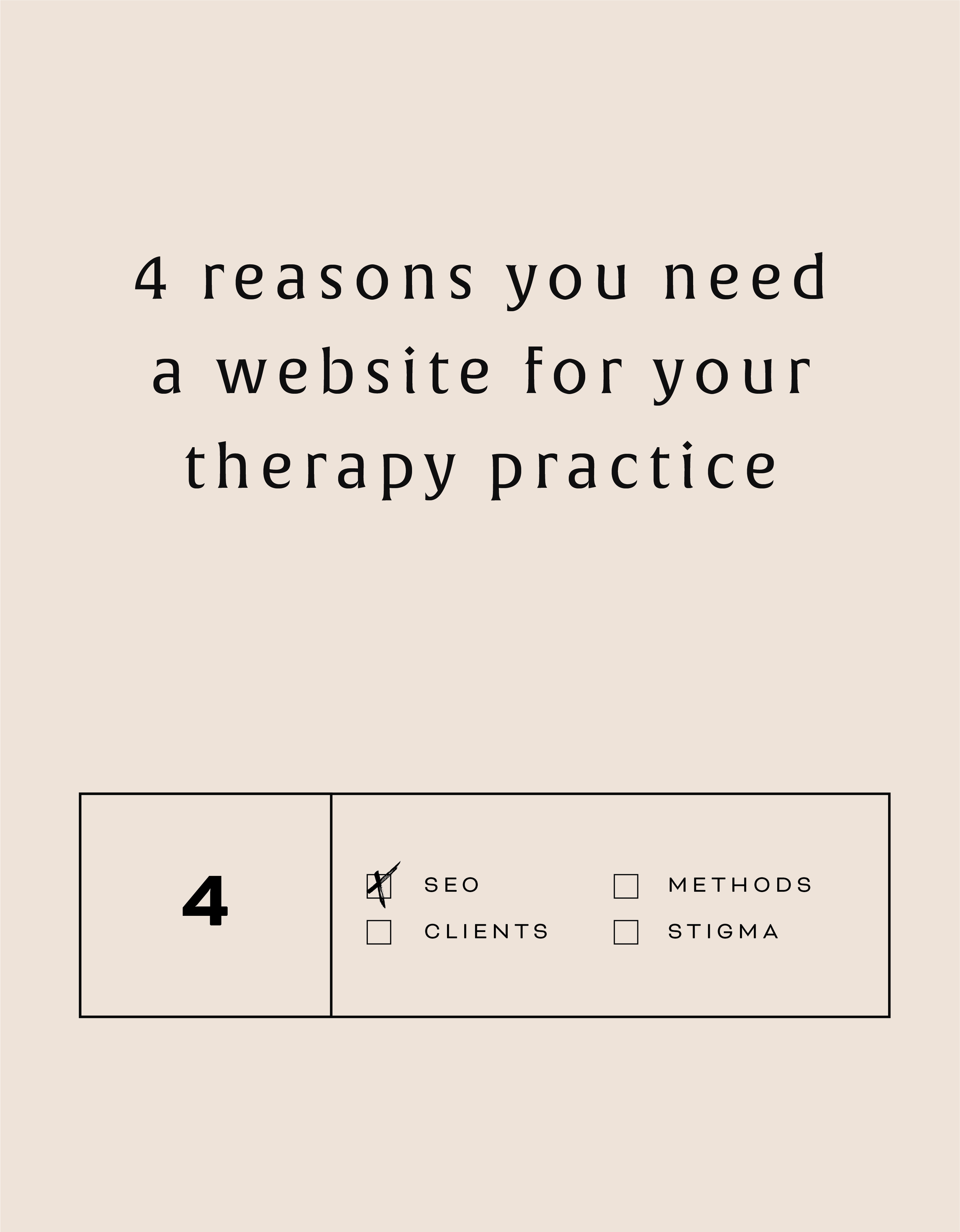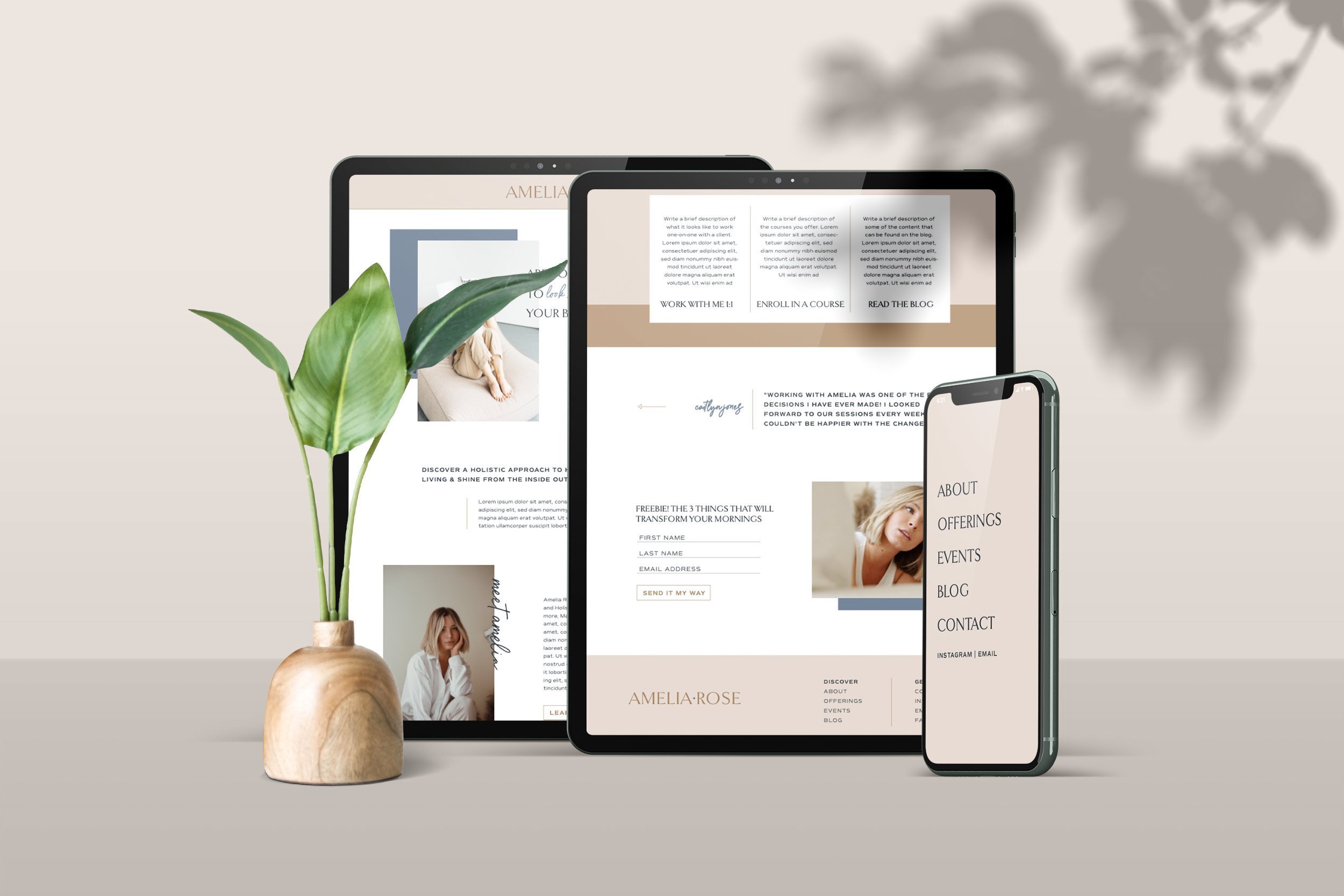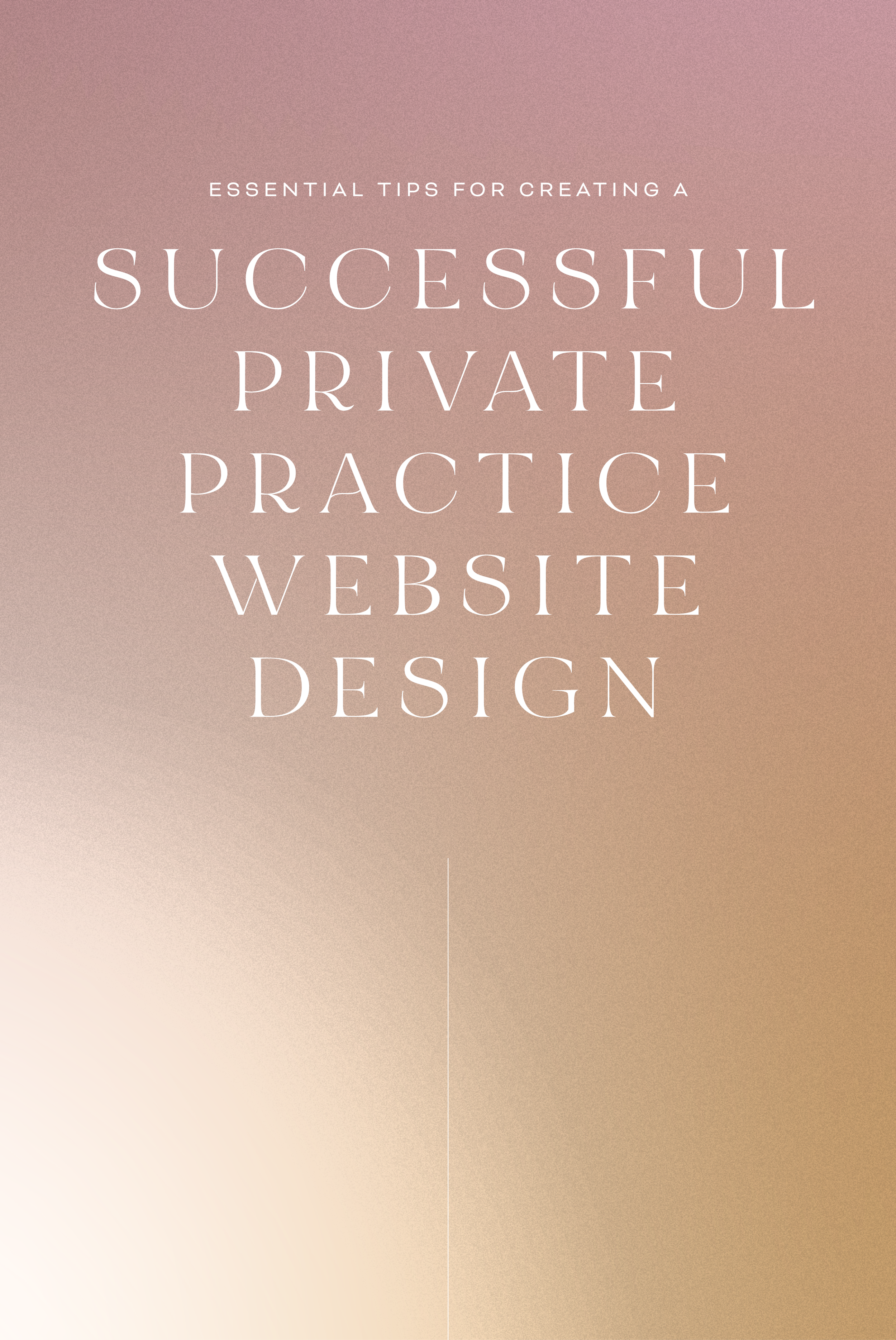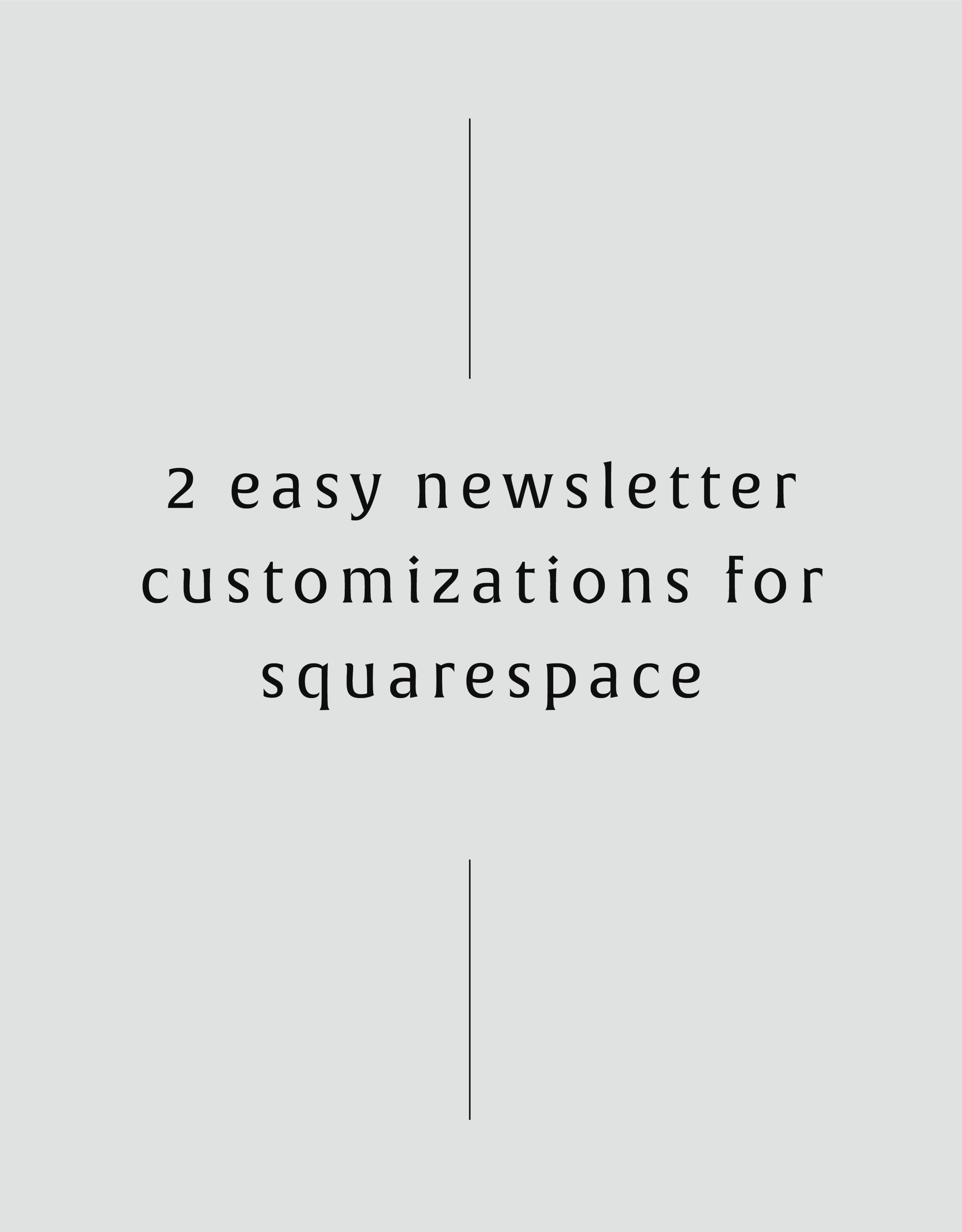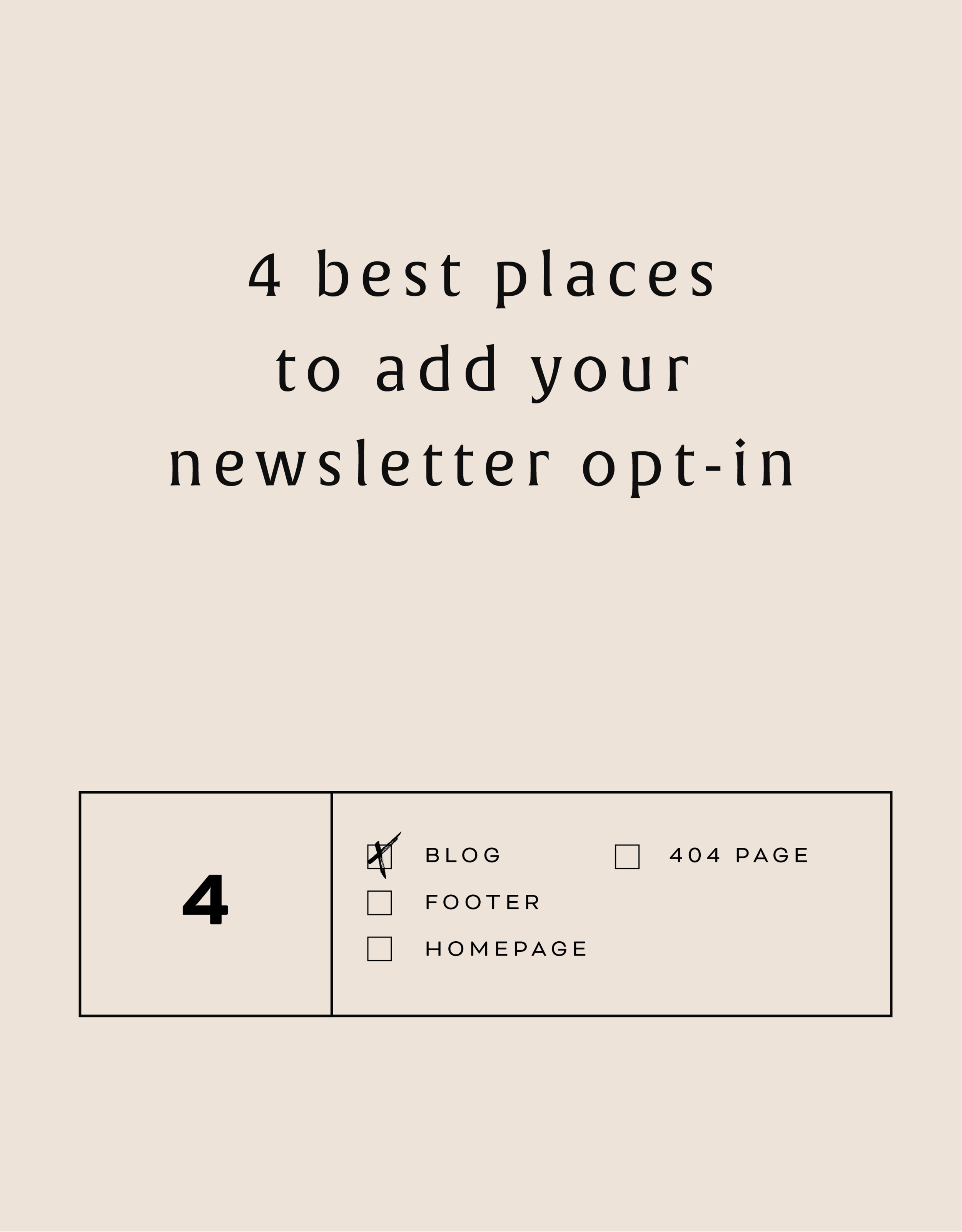Why You Need a Mood Board for Your Private Practice Logo
Discover why private practice therapists need a professional logo and why a mood board is the crucial first step with therapy logos to build trust, attract more clients, and boost income with expert logo design for therapists.
If you’re a therapist in private practice, chances are you’ve spent a lot of time learning how to help people—but maybe not as much time thinking about your branding. One of the most overlooked (yet powerful) parts of building a successful practice is your logo.
But before a designer dives into the details of the logo itself, they will create a mood board. A mood board is an internal tool created to ensure that the logo designer is on the same page with their client. This mood board should of course convey the mood and vibe of the brand, but how does that translate to private practice therapists?
First Impressions Matter in Private Practice
When someone searches online for a therapist, they’re often feeling vulnerable, overwhelmed, or uncertain. Your branding is going to be one of the main visuals a potential client interacts with before deciding to contact you. The mood board is going to make sure that the vibe they are visually processing is the same vibe they will have when they work with you. Through photos, colors and graphic elements, you should be able to get the look and feel your going for and make sure it matches what you want in a logo for your private practice.
Logos for Your Therapy Practice Build Trust and Connection
A well-crafted logo isn’t just about looking pretty—it’s about creating an emotional connection. The colors, shapes, and typefaces in your logo do more than decorate—they set the tone for your practice:
Bold, vibrant palettes convey energy, confidence, and momentum.
Minimalist layouts with ample white space communicate focus and simplicity.
Hand-drawn or textured elements suggest authenticity, warmth, and a personal touch.
Geometric patterns can highlight balance, structure, and stability.
Elegant serif fonts evoke tradition, wisdom, and trust.
When your logo mirrors the feelings your clients hope to find, it makes it easier for them to picture a meaningful connection with you—often before they’ve even reached out. And the first step is to map these elements out in a mood board. The mood board will showcase your color palettes, font examples, iconography and photography. All of these should work together to create the emotional tie the logo will bring to life.
Standing Out in a Crowded Field
Let’s be honest: the therapy world is crowded, especially in cities and online platforms. Many therapists offer similar services, and clients often scroll through dozens of profiles before making a decision.
A distinctive, professional therapy logo design helps your practice stand out. Instead of blending into a sea of text-heavy listings, your visual identity makes you memorable. The right design can set you apart as the therapist who “feels right” even before a consultation call.
A Mood Board Helps Nail Down Who Your Client Is
By gathering colors, images, fonts, and textures that reflect the feelings you want clients to have when they first encounter your practice, you start to see patterns emerge. Maybe your ideal client is drawn to calm neutrals and open space, signaling a need for safety and groundedness. Or perhaps they resonate with bold, confident colors and modern typography, pointing to a desire for growth, change, and clarity.
The process forces you to move beyond “what looks nice” and into “what feels right for the people I want to reach.” A strong mood board becomes the foundation of a logo that doesn’t just look professional—it speaks directly to the clients you’re hoping to serve.
When you start your logo design process with a mood board, you’re not just picking colors or fonts—you’re setting the emotional stage for how clients will experience your practice before they ever sit down with you.
It’s the difference between guessing what might resonate and intentionally shaping the first impression you want to give.
A mood board turns your values, vision, and ideal client into something tangible. And once that foundation is in place, the logo practically designs itself—because it’s rooted in meaning, not just aesthetics.
That’s why the best therapy logos always begin with a mood board. It ensures your brand feels consistent, authentic, and aligned with the clients you most want to reach. More than a creative exercise, it’s an act of clarity—one that allows your logo to truly work for you, welcoming the right people in and helping your practice grow with purpose.
Looking for a custom logo design for your therapy practice?
Skip the overwhelm and get a logo
designed that authentically matches your therapy style.
Why Private Practice Therapists Need a Well-Designed Logo
Discover why private practice therapists need a professional logo. Learn how therapy logos build trust, attract more clients, and boost income with expert logo design for therapists.
If you’re a therapist in private practice, chances are you’ve spent a lot of time learning how to help people—but maybe not as much time thinking about your branding. One of the most overlooked (yet powerful) parts of building a successful practice is your logo.
A strong, thoughtfully designed logo can make a big difference in how potential clients see you, whether they choose to reach out, and ultimately how your business grows. Let’s explore why logo design for therapists matters and how the right therapy logos can help you book more clients and increase your income.
First Impressions Matter in Private Practice
When someone searches online for a therapist, they’re often feeling vulnerable, overwhelmed, or uncertain. Your logo is often the first visual element they see on your website, business card, or Psychology Today profile.
A professional therapy logo sends the message that your practice is established, trustworthy, and competent. On the other hand, a dated or generic logo—or worse, no logo at all—can unintentionally make your practice feel less credible. In a competitive market, that first impression can be the difference between a potential client reaching out or moving on.
Therapy Logos Build Trust and Connection
A well-crafted logo isn’t just about looking nice—it’s about creating an emotional connection. The colors, shapes, and typography you choose communicate subtle messages about your style and approach:
Soft, calming tones suggest warmth and safety.
Clean, modern lines communicate professionalism and clarity.
Nature-inspired imagery can evoke growth, healing, and renewal.
When your logo resonates with the feelings a client is looking for, it becomes easier for them to imagine working with you. That trust-building starts before the first session.
Standing Out in a Crowded Field
Let’s be honest: the therapy world is crowded, especially in cities and online platforms. Many therapists offer similar services, and clients often scroll through dozens of profiles before making a decision.
A distinctive, professional therapy logo design helps your practice stand out. Instead of blending into a sea of text-heavy listings, your visual identity makes you memorable. The right design can set you apart as the therapist who “feels right” even before a consultation call.
How a Logo Impacts Your Bottom Line
Investing in professional logo design for therapists isn’t just about aesthetics—it’s about business growth. Here’s how a great logo translates into more clients and revenue:
Higher conversion rates: A polished brand encourages potential clients to click, call, or book.
Better word-of-mouth: Clients are more likely to share your website or business card if it looks professional.
Premium positioning: A well-designed logo allows you to charge fees that reflect the quality of your services.
Think of your logo as a long-term investment in your private practice. It works for you every day—on your website, your intake forms, your social media—helping attract the right clients and reinforcing the value you provide.
Your skills as a therapist are what truly change lives—but let’s be honest, your logo is often what gets people to knock on the door in the first place.
Think of it as the friendly wave before the deep conversation. A thoughtfully designed therapy logo gives your practice a quiet superpower: it builds trust, shows off your values, and makes you memorable in a crowded field.
If you’re ready to grow your practice (and make your future clients’ scrolling thumbs stop in their tracks), investing in professional logo design for therapists is a smart move. The right logo isn’t just pretty—it works hard behind the scenes to help your business flourish.
Looking for a custom logo design for your therapy practice?
Skip the overwhelm and get a logo
designed that authentically matches your therapy style.
Squarespace Font Combinations for Therapists
It’s more important than ever to have a website that provides both valuable content and an attractive layout. We’re sharing 5 different font combinations for therapists to use on their Squarespace website!
When building a website, there are a lot of different pieces that play a role in the site – copy, photos, layout, and more. Yet, before you can create a successful website, you need to establish a brand that speaks to your audience.
As a therapist, your potential clients want to come to your website and instantly get a feel for who you are and what your services are like. Do you have a warm, cozy office? Do you want them to feel relaxed? Or do you provide a professional atmosphere?
Did you know 38% of people will stop engaging with a website if the content or layout are unattractive?
It’s more important than ever to have a website that provides both valuable content and an attractive layout. We’re sharing 5 different font combinations for therapists to use on their Squarespace website!
1) Goldenbook & Ingra
Goldenbook gives off relaxed yet trustworthy feelings. It is sophisticated and professional, yet will still feel inviting to your therapy clients. Ingra is a simple, modern serif font with plenty of font-weight options to be used throughout the site.
2) New Spirit & Brandon Grotesque Light
New Spirit is a comforting serif font. It will feel warm and comforting to those dropping by your website. Pair it with a simple font like Brandon Grotesque for your body copy, to really allow it to shine.
3) IvyJournal Headline & Sofia
IvyJournal is a beautiful and sophisticated font. It has an elevated look, while still maintaining its friendly presence. Pair it with Sofia for a soft, humanistic feel.
4) Josefin Sans & Crimson Pro
Looking for a professional, modern feel for your website? Josefin Sans and Crimson are the perfect duo. These two give off clean and elegant vibes without looking too professional for your clientele.
5) Poppins & Soleil
Is your practice focused on being personable and approachable? Consider using Poppins as your heading font. It’s modern and approachable, pairing well with Soleil - another simple sans-serif font.
Ta-da!
Grab one of these font combos for your own website
(you can take all the credit!).
Once you find the perfect font combination for your own therapy website, you can feel proud to show it off and just watch those new client inquiries come rolling in…
Looking for a custom website design for your therapy practice?
Skip the overwhelm and have your website
designed and launched in just 5 days!
The 10 Best Website Designs for Therapists: 2023 Edition
Missing out on potential leads? Learn how to improve your search engine ranking and increase traffic to your website with tailored SEO tips for therapists.
For a therapist just starting your private practice, a website can be a huge marketing machine for your growing business. You can let the designs and vibe speak for you before you ever have that initial call with a potential new client. Website designs for therapists can have a range of styles, so below we’ve rounded up our favorited designs from 2023 that were made specifically with a therapist’s website needs in mind!
The Therapy Group
The Therapy Group’s website instantly gives a sense of calm with its soft, inviting colors and beautiful textured backgrounds. We love how the brand elements are incorporated into every section without feeling overbearing.
Website: The Therapy Group
Buffalo Roam Therapy
Buffalo Roam Therapy’s website stands out from the crowd with a warm, inviting color scheme. We love the consistent use of brand elements throughout the site - it really portrays the vibe of their Kansas location!
Website: Buffalo Roam Therapy
Rebecca Newton Therapy
Sometimes less is more. Rebecca Newton Therapy’s website has simple, clean layouts - making the process of working her feel just as simple. We love the soft colors and stunning photography.
Website: Rebecca Newton Therapy
Oak & Stone Therapy
Soft colors, hand-drawn elements and unique layouts - what’s not to love! Oak and Stone Therapy has a unique and easy-to-use navigation with line elements that are carried throughout the website. We also love that the engaging copy that really speaks to who they are as therapists and what they offer.
Website: Oak & Stone Therapy
Elizabeth Rubio, LCSW
While most therapists take a light, airy feel to their website, we love that Elizabeth Rubio did not stray from color. Her website makes therapy feel fun and inviting, all while clearly conveying her offerings.
Website: Elizabeth Rubio, LCSW
NEW!
a templated guide to
messaging magic
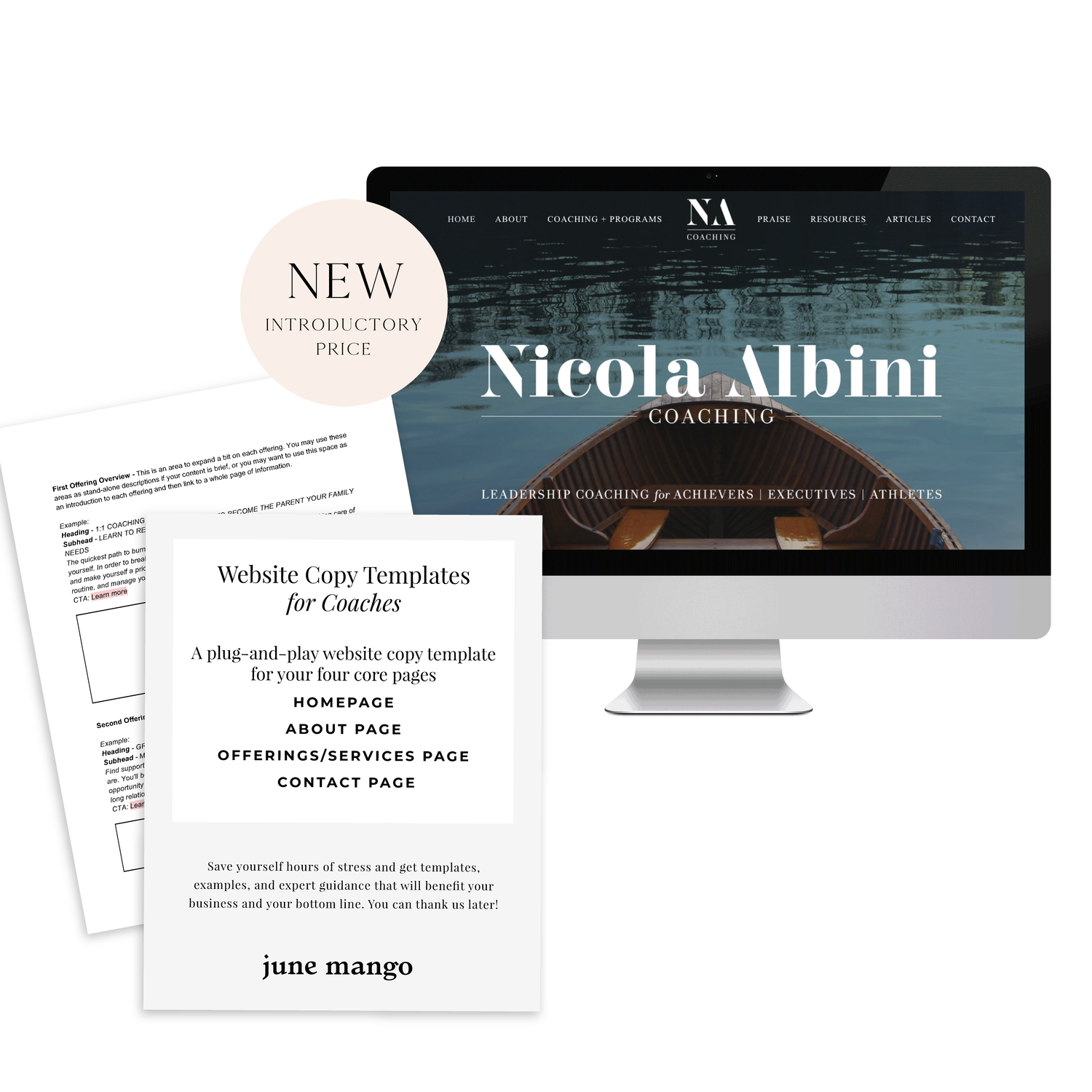
A plug-and-play website copy template for your four core pages (Home, About, Offerings, Contact). Save yourself hours of stress and get templates, examples, and expert guidance that will benefit your business and your bottom line.
get your template now >
Jessica Pavelka Counseling
We were initially drawn to Jessica’s unique photos and use of brand elements. Her website makes it clear who she is and what she offers from the second you land on the homepage - always a win!
Website: Jessica Pavelka Counseling
Dr. Tess Browne
Dr. Tess uses the soft tones of many therapists but adds in a splash of color and unique textured backgrounds. Her website does a great job of establishing her credibility and professionalism, while still feeling like a welcoming, safe space.
Website: Dr. Tess Browne
Dr. Ramona Burrage
Dr. Ramona’s therapy website is clean, quick-to-the-point and absolutely beautiful! We love the full header image, simple layouts and branded elements. It feels both sophisticated and approachable.
Website: Dr. Ramona Burrage
Dr. Nicole Z
This website incorporates nice textured and colored backgrounds that soften the vibe of the pages. It helps the page feel warmer and more welcoming - which is perfect for a therapist! We also love the beautiful logo and how it’s incorporated throughout different parts of the site.
Website: Dr. Nicole Z
Dr. Cassidy Freitas
This website just screams happy to us! We love the use of pink and arch shapes. Another piece that pulls her website together is how on-brand her images are, making the whole website feel cohesive.
Website: Dr. Cassidy Freitas
Looking for a custom website design for your therapy practice?
Skip the overwhelm and have your website
designed and launched in just 5 days!
Favorite Logos of 2022
A recap of some of my favorite unchosen logos and submarks from 2022 branding projects including one of a geometric hummingbird logo and one for a health and wellness coach logo.
There were so many fun branding projects in 2022 and so many amazing clients! Since each branding process gets 2-3 fully designed brand identity options, not all logos make the cut. Even if they don’t become the final version of a logo design, the creation and refinement is still an important part of the process. The health and wellness coaching logo on the bottom left even got featured on designrush best-designs. And I’m still a little in love with the geometric hummingbird logo. 😍
pst…
Like a logo above and think it’s the perfect fit for your business?
Feel free to reach out for details on how to purchase!
A Guide to SEO for Therapists
Missing out on potential leads? Learn how to improve your search engine ranking and increase traffic to your website with tailored SEO tips for therapists.
If you’re a therapist, having effective SEO can help you stand out in the crowded online marketplace and attract potential leads who are looking for services. Where do you start if you’ve never done SEO before? Optimizing your website and content with tailored SEO tips is essential if you want to improve your search engine ranking and drive more traffic to your website. If you’ve never done any SEO before, you’re in the right place - start here!
Understand Search Engine Usage and Optimization Strategies.
Start by understanding how to use search engine optimization (SEO) effectively. This includes knowing which keywords and phrases to use in your pages and blog posts to improve your visibility. You should also be familiar with common SEO practices such as optimizing page titles, meta descriptions, and the structure of URLs for maximum visibility. Furthermore, set up quality link-building campaigns on social media or other related websites to drive more traffic to your website.
Create Quality Content That Showcases Your Specialty Areas.
Publishing quality content is essential for successful SEO. Relevant keywords and content tailored to what potential clients are searching for will help to increase your visibility in search engine results. Additionally, you should tailor the content to include specialty areas that you specialize in as a therapist. This ensures that your site has more chances of appearing at the top of search engine results pages whenever someone searches for a specific condition or concern.
Clearly Define Keywords and Identify Long-Tail Keywords.
Keywords are the foundation of effective SEO, and as a therapist, you’ll need to identify words and phrases that serve as important search terms for your target audience. For example, you would be better off with a keyword like “EMDR for car accidents” rather than “EMDR therapy”. The more specific, the higher likelihood you will be seen on search results. Once you’ve done that, you can optimize content in order to rank higher on SERPs (search engine results pages). Additionally, by identifying long-tail keywords relevant to your specialty practice, you can ensure better visibility when people search for specific services or types of therapy.
Optimize your Site for Mobile Viewing.
Mobile optimization is crucial for creating a successful therapy website. So many people (and potential clients!) are using phones and tablets to browse the web and look for a therapist. To ensure that these visitors don't become frustrated with load times or the design of your website on their device, make sure that your web design is responsive (aka: it scales to a smaller screens size) and optimized for different devices. This will ensure that potential clients are able to navigate and access all relevant information quickly and easily on their device of choice!
Optimize Your Website With Structured Data, Schema Markup, and Meta Descriptions & Tags.
A little jargony… I know but stick with me! Structured data, schema markup, and meta descriptions & tags are the technical foundations of Search Engine Optimization. For example, schema markups allow you to identify your content and make it easier for search engines to accurately categorize your website when people are searching for specific topics. Similarly, optimizing your meta titles and descriptions can help potential clients quickly identify whether your website offers the services they’re looking for — making it easier for them to access valuable resources. Additionally, optimizing URLs can increase click-through rates from SERPs (search engine result pages), meaning that more people have a chance of discovering the site on Google or other popular search engines. This does start to get into the weeds and this is usually where I’d recommend chatting with a web designer who knows how to easily set these data points up for your website.
Track Results With Analytics & Use Information to Effectively Monitor Progress Over Time.
In order to track the success of your SEO efforts, you should take advantage of analytics tools such as Google Analytics. It can provide valuable insights into how visitors interact with your website and how people are finding your site in the first place. It’s important to review this data regularly, so that you can make changes to your website’s design and content based on what is actually working for you. Tracking progress over time can allow you to identify where improvements could be made, allowing you to refine marketing strategies and optimize exposure. If you’re not sure how to set up Google Analytics, your web designer can help point you in the right direction!
Don’t miss out on potential leads! You can improve your search engine ranking and increase traffic to your website with a little planning and these tailored SEO tips specifically for therapists! You’ve got this.
need even more help with your website?
Skip the overwhelm and have your website
designed and launched in just 5 days!
How to Find Unique Stock Photos for Coaches
Are you struggling to find beautiful photos that represent your business for your website? When searching for stock photos, it can be a challenge to find photos that don’t scream “stock photo”, as well as to avoid using the same photo as every other coaching business out there. We want to help you find photos that speak to you and your brand from some of our favorite stock photo resources.
Before we share the resources, why do you even need good photos?
Photos have the ability to elevate your website design or completely distract from it - no matter how well-designed it is. As a coach, your website is often the first place potential clients turn to find out more about you. Your website should convey you, your personality, and why people should work with you. The photos you use have the ability to enforce that personality and show off who you are in a more visual way than copy can.
Before beginning your search for unique stock photos, take a moment to think about the atmosphere and style you wish to portray through them. Do you want to display a sophisticated, professional vibe? Or show off your bubbly, colorful personality? Maybe you want to display your love for nature through your photos.
Once you’ve thought through these things, you can begin your search for the best stock photos for your coaching website.
Our favorite sources for free stock photography are:
These two websites have great libraries of photos that differentiate from the often cheesy stock photos found online. They tend to have a more artful approach – perfect for finding elevated photos for your coaching website.
When searching on free stock websites, try to search outside of the obvious terms like “health coach”. You may find better results when searching other things like “woman working”, “friends coffee”, or “minimal aesthetic” that speak to your brand and the photos you are looking for.
Another great option for your website is to take a look at paid stock options. While not always necessary, it can open up a lot more options to use for banner images on your website!
A few of our favorite options for paid stock photos are:
With both free and paid stock photography, make sure to read licensing agreements thoroughly, and make sure you understand before using the images.
Get intentional with your photo choices for your website and your clients will instantly feel more attracted to your business!
WANT to CREATE
a custom WEBSITE?
Monthly Website To-Do’s for Therapists and Coaches
You’ve worked hard over weeks, maybe even months, to get your website put together and ready for the world to see. Once it’s live, it can be easy to mark it off the to-do list and shift your focus elsewhere. However, it is important that you continue to make sure your website is healthy and well-maintained.
By making website maintenance a part of your monthly routine, you can help ensure that your website visitors have a great experience, you continue to drive traffic from search engines, and that you are consistently gaining new clients!
Remember, your website is your best marketing tool!
We’re going to provide a few simple steps you can take each month to keep your website running smoothly and effectively.
Create New Content - Why take the time and effort to add new content to your website? Search engines like Google love websites that are consistently adding new content to their website. They are far more likely to show active, updated websites in search results to users rather than websites that haven’t changed for months on end.
You don’t have to publish multiple blog posts a week in order to keep your website relevant in search results. Try to start with even just one blog post per month with relevant, SEO-friendly content. If you don’t have the time to take on blogging right now, try sharing relevant videos to your blog, creating a podcast and sharing episodes, or utilize a members area on your site.
Check forms and look for broken links - If your contact forms on your website aren’t making it to your inbox, you could be missing out on a large amount of opportunity for your business. Take a few minutes every month to do a test run on your contact forms. Those few minutes could be the difference in you getting to help a new client or not!
While you’re checking forms, take a quick swipe through your website and check all of your buttons and links to ensure they are linking to the proper pages. This may seem like a monotonous and unnecessary task but it will help users have the best experience possible.
Review your website analytics - Website analytics can provide you data on where your website traffic is coming from, how many people are visiting your site, how long they are looking at it and more. If your website is hosted on Squarespace, you can see these analytics right in your dashboard.
You can also find analytics with Google’s tools: Google Analytics, Google Search Console, and Search Console Insights.
Even just 10-15 minutes of website analysis every month can help you make sure your content is reaching the right audience, as well as inform your marketing strategy for the month ahead.
WANT to CREATE
a custom WEBSITE?
3 Ways to Add Staff Member Bios to Your Website
One of the most important parts of your website is the About page. Your potential clients and customers want to know who you are and what your business is about. A great way to do this is by sharing your staff bios on the page and sharing a little bit about them.
We’re sharing three creative ways to add staff members bio to your website!
Image & Description
Have a lot to say about your staff? A side by side photo and description can allow for plenty of space to write out an about section or staff bio. Here’s one of our favorite examples from a dental office website design!
Stacked Descriptions
If you have quite a few staff members who need bios or shorter descriptions for your staff, try out the “Stack” photo layout. Customize the appearance in your Site Styles to change up the colors, fonts, spacing, etc. This featured layout works great for simple staff member bios or for multiple psychologists on a private practice website design.
Simple Grid
Looking to keep it simple? This option is also laid out with the “Stack” photo block but just adds names and job titles. An easy layout for private therapy practices who may be updating their staff page often! A good website design will account for the hierarchy of the staff members as well as the space needed for their bios and content.
What Every Coaching Website Needs on the Homepage
As a coach, you need a website that speaks to your audience and compels them to work with you. While it should look beautiful, you also need it to include the right content to resonate with your audience.
So, what do you actually need to include on the homepage of your coaching website?
Before you start planning out your content, it’s important that you think through a few things.
Who are you trying to reach? The age, lifestyle, interests, and beyond can affect what type of content your website should include. You’ll want to ensure you have a clearly defined audience in place before you can properly write out the content for your website.
What information do your clients usually need to know? Think through some of the most commonly asked questions you receive by potential clients. You’ll want to make this information prominent and easy to access on your website. It’ll save both of you time, as well as ease their decision process.
How can you represent your business? When planning your website content, try to express your personality and what you can do for potential clients. They want to work with a coach who is going to understand and relate to them.
Now that you’ve thought through these questions, you’re ready to start planning out your content. Here are a few important details to include on your coaching website’s homepage:
A Clear Headline – As soon as someone lands on your page, they should be able to read your headline and briefly understand what coaching services you offer and how you can help them.
Specialties/Services – No need to go into detail on your homepage, but make it clear to your audience what options you have for your coaching services. This will save them from having to hunt around your website to find these answers.
Easy Navigation – Navigation can either make or break the usability of a website. Provide a clear, easy to use menu, as well as buttons throughout the page to link to other subpages on your site.
Yourself! – A friendly photo of yourself and/or your team can help potential clients trust you more quickly, as well as establish more credibility.
Brief About Paragraph – Provide an about section to describe you, your business, and the results clients can expect to achieve when they work with you. This can link to another page for more details.
Contact Option – This can be set up in a variety of ways, but it is important to have a way for users to contact you on your homepage. It can be a brief contact form or simply a button linking to your full contact page.
WANT to CREATE
a custom WEBSITE?
How to Choose the Right Web Design Option for Your Business
So, you’ve decided you’re ready to take the leap and start a website for your business? It can feel like a daunting decision on what to do next. Should you buy a pre-made template online or hire a designer for a fully custom website design? We’re sharing the reasons you may choose one over the other.
Your Current Budget
As you can expect, hiring a designer for a custom website is much more expensive than purchasing a template. Squarespace templates can range from as low as $97 and up to $500. Custom websites can range greatly, depending on who you work with and the customizations you require.Your Available Time
Remember…“time is money”. Is it worth it for you to have someone else do the work for you so you can focus on other aspects of your business? Templates are typically fairly simple to customize but will require more of your time than a fully customized website.
A custom website will likely take less effort on your end, but the overall process may be longer as a designer will be creating your website from scratch!Your Current and Future Goals
If you’re just getting started in your business or are working on a low budget, you may want to start out with a Squarespace template for your website. Particularly if you see yourself rebranding in the next year or two, it may not be worth it to invest in a custom website until you have a more established brand identity.
If you have an established brand and a specific look in mind for your website, you may want to opt for a custom built website. A custom website will be more tailored to your audience and help you avoid having to redo your website in another year or two as your brand evolves. Additionally, a designer can help you incorporate custom features or plugins into your website that will be specifically tailored to your business needs.
Here at June Mango, we offer both Squarespace Templates and fully customized websites through our Go Live in 5 process. Reach out to us today for more details!
WANT to CREATE
a custom WEBSITE?
Why you need a website for your therapy private practice
A large part of running a successful private practice is having a solid marketing strategy. If users can’t find your business online, then they are far less likely to become a client of your practice.
If you run a practice that is already full or tends to get plenty of word-of-mouth clients, then continue with your current marketing strategies. However, if you are like most private therapy practices, a website will only benefit you. A custom private practice website design will give potential clients the information they need to choose a therapist that best meets their needs.
If you aren’t convinced already, here are four reasons you need a thoughtful private practice website design:
SEO - If people can’t find your practice online, then they may never know you exist. A website will “put you on the map” and allow your private practice to start showing up when potential clients search for therapists in their area.
Connect with your ideal clients - A website tells your clients who you are and what people you serve. Your website has the ability to portray the atmosphere of your practice and help ideal clients feel connected and excited about the opportunity to become a client.
Shed the mental health stigma - For years, mental health has had a negative stigma around it. However, in the past few years, people are making strides towards a more positive outlook on mental health. When it comes to your website, you have the ability to push this movement forward with your website design. Good website design can help therapy-seekers feel seen and accepted. It can take away the fear many people may have about reaching out for help. Your website is a platform for you to show who you are and help potential clients feel connected to you from the start.
Accurately reflect you and your methodology - When searching for a therapist, people take a much more personal approach than in other industries. They want to know who their therapist is, their story, and how they can help them with the struggles they are walking through. While credentials and professional experience do hold value, clients will feel most seen and heard if they know that their therapist has walked through similar trials as they have. A good private practice website design will have information about your approach, your counseling options and your therapists’ bios.
If you’re just starting your private practice, get something up online! If users can’t find your business online, then they are far less likely to become a client of your practice. It doesn’t have to be perfect, but it should generally reflect your unique approach so you can help more people! We need what you have to offer!!
You've Got This
〰️
You've Got This 〰️
WANT to CREATE
a custom WEBSITE?
What Therapists Need to Know Before Hiring a Web Designer
When it comes to choosing a website designer for your upcoming therapy website, it’s important to ask a few questions before making your hire. While it is important that you live a designer’s style and aesthetic, it’s also just as crucial to ask a few more practical questions before hiring.
We’ll walk you through 5 questions therapists should ask before hiring a web designer!
How do you like to communicate?
Working with a team or group of people on your website can be efficient but can also cause miscommunication if not set up properly. Be sure to ask potential designers what their process is for managing the project. How will they keep you informed of deadlines? Will you do video calls, voice chats, email, or use a project management system? Who will you be communicating with?
Be sure you understand what their process looks like and ensure that will work well with your systems. If you feel strongly against working in a client’s project management system, try to find a designer that works in a platform you feel comfortable with.Who will manage your site after it’s done?
As a therapist, this is a particularly important question to ask. We understand that you are busy working with clients and may not have extra staff available to keep your website running smoothly. Check in with any potential designers on how much maintenance your website will need, if they will help with that, or if you will be able to do it yourself.How will a new website connect you with your clients?
Sure, you want a pretty website, but more than that, you should want it to connect you with your clients. Find out how your new website will connect you to your therapy clients. This may mean you need to work with a designer who has worked on therapy websites before, or in similar industries. Don’t be afraid to ask lots of questions!How do you work best? (collaboration, designer takes the reins, etc)
How involved do you want to be in the website process? If you love to see every step of the process, you may have more success working with a designer who values collaboration.
Would you rather have an initial consultation then let the designer take the reins and run with your project? Seek out a designer who values this type of work style!What pages/content do you want to showcase?
When choosing a website designer, you’ll want to make sure they work on a website platform that works for your needs. Certain website platforms work better for simple content, while more complex needs may require particular plugins that are only offered on Wordpress, for example.
Asking these questions before hiring your website designer will ensure a smooth process and better communication!
WANT to CREATE
a custom WEBSITE?
New Work: Snow Shimazu Holistic Wellness and Yoga
New work! This lovely web launch for Snow Shimazu, a holistic health pro and yoga expert, is a great example of a light, airy website. Lots of white space (her name is Snow after all!), parallax photos and beautiful branding.
Client:
Snow Shimazu
Service:
Go Live in 5® Web Design
Design Direction:
Light, airy
#1 Goal:
New service promotion
Timeline:
5 days
URL:
snowshimazu.com
Squarespace Font Combinations for Healers
We’re providing 6 font pairings, as well as sharing the emotions/feelings they evoke. Think about who your brand is and what you want to say, then find the perfect font pairing for you!
Ready to launch your wellness and healing brand but don’t know what fonts to use? You’re not alone. It can be challenging to find a combination of fonts that speaks to you and your brand, while standing out from the sea of other healer websites.
We’re providing 6 font pairings, as well as sharing the emotions/feelings they evoke. Think about who your brand is and what you want to say, then find the perfect font pairing for you!
Orpheus & EB Garamond
Timeless
Sophisticated
Elegant
Sophisticated
Trustworthy
Quiche Sans Light & Roboto Light
Relaxed
Minimal
Soft
Approachable
Inviting
Forum & Work Sans
Modern
Friendly
Grounded
Structured
Established
Lust & Raleway
Sophisticated
Urban
Bold
Sleek
Fashion-Forward
Freight Neo Pro & Lato
Polished
Simple
Clean
Honest
Minimal
Freight Big Pro & Garamond Premier Pro
Elevated
Elegant
Timeless
High-End
Soft
WANT to CREATE
a custom WEBSITE?
"I bought a web design template. Now what?"
So you just bought that beautiful new website template from a trusted designer and you’re ready to get to work! But now you’ve been trying to change layouts, add your own brand colors and fonts and it just doesn’t look right. It definitely doesn’t look as professional as the original template you hoped you were duplicating. So what gives?
This is so tough. And first, let me just say, it’s not your fault. It’s really hard to get a pre-made template and make it look exactly like the original design once you implement your own content. Unless you are following the design and layout exactly (meaning no changes or additions!), things can get wonky.
The problem is not you.
The problem is that you’re trying to fit yourself and your brand into something that was never made to fit your exact needs. Does that mean you have to go hire a web designer 1:1 for a custom project? Nope. That’s certainly the best way to get a custom-made website, but for those who are not ready, have a small budget or just want to do it themselves, templates are still a good option.
So what’s missing? And how can you fix it?
The problem is that you are given only one piece of the puzzle. Admittedly, it’s a really crucial piece, but it doesn’t create the whole picture. When you have a designer template, the designer has also hand-picked photos, custom color palettes, font pairings and even thought through the copy and structure of the website. BUT - they don’t give you that. And you wouldn’t want that because again, it’s not one-size-fits-all.
Imagine you want to make Molly Yeh’s Kransekake for a holiday party. You look at the photos of her beautiful cake and swoon over the idea of creating such a perfect cake. So you read her recipe and gather all of your ingredients. Only… you don’t have rosewater so you sub vanilla extract and you don’t have sprinkles but you have some sanding sugar, and you even make a paper chain to hang on it, but yours is much wider and clunkier and by the time your done, you certainly have some version of a kransekake, but it’s nothing like Molly Yeh’s.
This is exactly what happens with a web template. Because you are not a designer (or a food network star!). And that’s okay.
Just like Molly Yeh’s cake needs cute, thoughtful design touches, so does your DIY website. You need curated photos that match and work together with your brand colors and actually fit the layout of a website and also don’t look weird with text over them…. OR font pairings that feel sophisticated, but also approachable if that’s your thing. These are elements a designer knows how to find, create or curate.
The route to alleviating all this frustration is by having the proper tools and assets ready to implement into the process and project.
These elements have the ability to elevate your website design or completely unglue it - no matter how well-designed a template is. As an online business, your website is often the first place potential clients turn to find out more about you. Your website should convey you, your personality, and why people should work with you. The photos you use have the ability to enforce that personality and show off who you are in a more visual way than copy can. The layout needs to flow and work together.
Before beginning your search for the perfect web design template, get intentional with your photo choices, font pairings, and color schemes. Write your copy and then see if it will really fit in that web templates layout. Better yet, write your copy TO FIT once you’ve picked your dream template. Your website and your clients will instantly feel more attracted to your business when each element is thoughtful and carefully curated!
You can do this.
WANT to CREATE
a custom WEBSITE?
Web Design Myth: I should appeal to everyone in order to book more clients.
When preparing to create a new website for your business, it can be easy to fall into the trap of attempting to appeal to everyone. While it’s a great idea, it just isn’t possible. Certain types of people are drawn to certain websites and designs, while other people are drawn to the total opposite.
If you try to find the “middle ground” to appeal to everyone, you end up appealing to no one! There are definitely certain overlapping elements that can appeal to multiple people, but the reality is, you’ll never have the perfect combination.
So, what’s the best way to tackle your website? Choose a niche! Think about your audience for your business/product, what they like, how they spend their time, their demographics, etc. You’ll be able to start narrowing down your audience and reaching those people more effectively.
Here are a few things to think through to appeal to your niche:
Branding – Are you offering services targeting at kids and teens? Your brand should portray a vibrant, youthful feel. Do you provide therapy to adults? You’ll want your brand to portray a trustworthy, relaxed vibe.
Your branding should directly reflect you, your audience, and your brand’s personality.
Colors – Like with your branding, your colors should also appeal to your niche audience. A bright, colorful palette would not make sense for a brand focused on therapy for grieving and loss. However, it may make sense for a young company offering virtual assistant services! Be sure your colors reflect the personality you want to give off.
Photos – Photos have the ability to quickly attract or deter your audience. If they can’t see themselves represented in your photos, they will be much quicker to try another website. If your organization is focused on diversity, your photos should reflect that! If you offer coaching for middle-aged women, your photos should show women in that demographic.
As you put together your website, be sure to provide multiple opportunities for your audience to hire you. If they’re never invited to reach out or contact you, they’ll move on and look elsewhere!
WANT to CREATE
a custom WEBSITE?
How to Find Sophisticated Therapy Stock Photos
Did you know it takes only 50 milliseconds (0.05 seconds) for users to form an opinion about your website that determines if they stay or leave? Often, the first thing a user sees in that time is the photos on your site.
Photos have the ability to elevate your website design or completely distract from it - no matter how well-designed it is.
As a therapist, you want your clients to feel seen and comforted upon arrival to your website. They want to know that your practice provides a safe place for them to come as they are – with all of their feelings and struggles. The goal of your website photography should be to aid in portraying the atmosphere you wish to provide at your practice.
Before beginning your search for therapy stock photos, take a moment to think about the atmosphere and style you wish to portray through them. Do you want to display a cozy, nurturing environment? Or a light, inviting, and minimal space? Do you want to portray the diversity of your clients or focus on your space itself?
After you’ve thought through these things, you can begin your search for the best stock photos for your therapy website.
Our favorite sources for free stock photography are pexels.com and unsplash.com.
These two websites have great libraries of photos that differentiate from the often cheesy stock photos found online. They tend to have a more artful approach – perfect for finding sophisticated therapy photos.
When searching on free stock websites, try to search outside of the obvious terms like “therapy” and “therapist”. You may find great results when searching other things like “office”, “friends”, or “minimal”.
Another great option for your website is to take a look at paid stock options. While not always necessary, it can open up a lot more options to use for banner images on your website! A few of our favorite options for paid stock photos are:
With both free and paid stock photography, make sure to read licensing agreements thoroughly, and make sure you understand before using the images!
Get intentional with your photo choices for your website and your clients will instantly feel more attracted to your practice!
WANT to CREATE
a custom WEBSITE?
Setting boundaries via email
Even if you love your clients, it's still super important to set up clear and simple client boundaries. This not only helps you, but is important for them as well. I promise it's helpful for everyone involved!
There are lots of emails that come through the virtual door that may test your boundaries. It can be hard to hold the limit you’ve set for yourself, especially if you really want to nail the sale or take on the opportunity. But remember that you set your boundaries for YOU. And most of the time, people respect you when you hold true to your boundaries. If they don’t, that’s their problem. Literally… you can’t solve that for them or fix their feelings.
Important! I’m not saying that you should be unkind. In fact, I find that limits, rules and boundaries are a kindness in themselves. They let people know what to expect and what won’t fly.
But since sticking to those boundaries can be hard, here are a few common ideas to help you respond thoroughly, quickly, and cheerfully to those boundary-pushing emails.
Email #1: I want a discount!
Here’s some truth talk: once you know your worth, you’ll stop discounting your prices. Only you can do the exact thing that you are offering in the exact way you’re offering it. So when someone asks for a discount, be kind but firm.
Start by sharing that you understand where they’re coming from. Having a set budget may be one of their boundaries!
Share that you can’t lower your prices. You can communicate that your prices are carefully calculated based on the process and your expertise.
Reiterate that you understand. If that means you can’t work together, no harm no foul.
Offer to refer them to someone else. This may seem counterintuitive, but people really appreciate this extra step. They probably spent a bit of time searching for someone like you to help them. They’ll leave you without working together, but may still recommend you to someone else (who CAN afford you!).
Email #2: I want extra stuff!
This may depend on the person and the project. For example, you may feel a humble request for something small is no big deal. But what if that’s the first of many requests? This can quickly spin out of control.
Again, be kind but firm. Share that, unfortunately, you just can’t offer or include that extra thing.
Offer your reasoning. This might be that it takes too much extra time, or that it’s simply not included. It can be very straightforward and simple.
Share how they can access that thing for value. In other words, if they would like to purchase the extra item, you’d be happy to share that for $$XYZ price.
Leave the ball in their court. Simply ask them to let you know if they’d like to move forward with your offer. They’ll likely decline, but if they do want to, you’re no longer giving your precious time/energy/work for free.
Email #3: I need this now!
I get these emails a lot. :) For some reason, a few people think that we are not humans but instead are some kind of creative machines that should be available at all hours of the day, any day of the week. This type of email is tricky because often the request is nice and the email conveys a real sense of need. It’s hard not to help someone in NEED! But truthfully, they probably don’t actually NEED the thing (at least not right NOW!)
Again, be kind but firm (are you sensing a theme yet?). First, acknowledge their request and that it is (or feels) urgent.
Let them know when you will tackle it. If they said they really need something fulfilled on Sunday when you don’t work weekends, let them know what your soonest availability is. A chipper, “I’d be happy to help! My next available time is Monday at…” works perfectly.
Again, confirm they want to move forward with the new arrangement. Simply ask them to let you know if that works for them.
Email #4: A complaint.
Ugh, this is a tough one. It really hits your pride and if you’re a people pleaser, it may trigger a need to “fix” it for them. But you don’t necessarily have to. This is a more nuanced email depending on the gripe, but here are a few guidelines.
Note that you understand their complaint and why they feel the need to raise it.
If you do need to make amends in some way, share how you plan to do so and what they can expect.
Let them know that their feedback is valuable. You can also share how you may incorporate their feedback into your future work, etc.
Wish them well and wrap it up.
Email #5: Waiting on payment.
Even years into business, this still happens to me occasionally. An invoice goes out, but it seems to get lost along the way. Following up with a client about money could be awkward and therefore avoided, but we all deserve to get paid! This email is actually simple and straightforward.
Keep it light. Just note that you’re checking in. Perhaps they never even received it? Or life got crazy and they plum forgot.
Offer to resend it. This is the “Let me help you help me” approach.
If you have any late fee protocols, remind them of this (and ideally send this email before they’re applied as a courtesy).
Thank them for working with you and wrap it up!
WANT to CREATE
a custom WEBSITE?
Squarespace Font Combinations for Coaches
Selecting fonts for your coaching website can feel like a daunting task. In a sea of thousands of font options, it can be a challenge to find the perfect font pairing that expresses who you are and attract your ideal audience.
When searching for fonts for your coaching website, you’ll want to find fonts that balance each other out and work well for readability. You want them to express who you are and attract new clients to your business.
Below are 5 selected font pairings for coaches from Google Fonts and Adobe's Type Kit. All of these fonts can be found within your Squarespace account - no need for custom code!
1) Moret & DM Sans
Moret is a sophisticated yet playful font for your website. It provides a professional and established look while still allowing for your brand’s personality to shine through. Pair this font with a simple serif font like DM Sans for the perfect duo.
2) Bebas Neue & Raleway
Looking for a bold and eye-catching font for your website? Bebas Neue is perfect for you. This font is sure to catch your reader’s attention as soon as they land on your site. Pair it with a thin serif like Raleway for your body copy and subheadings.
3) Tenor Sans & Cormorant Garamond
This font pairing is perfect for those wanting a balance of modern and sophisticated style. The pairing of the bold, uppercase headings with the soft serif font provides the perfect balance.
4) DM Serif & Brandon Grotesque
Want your brand to portray your fun personality? This font pairing is bold, and pairs perfectly with bright, colorful branding.
5) Amethyst & Soria
Bold, sophisticated, classy. These fonts are perfect for those in the health and wellness industry. They’ll make your audience feel both relaxed and recognize you as the true professional.



































